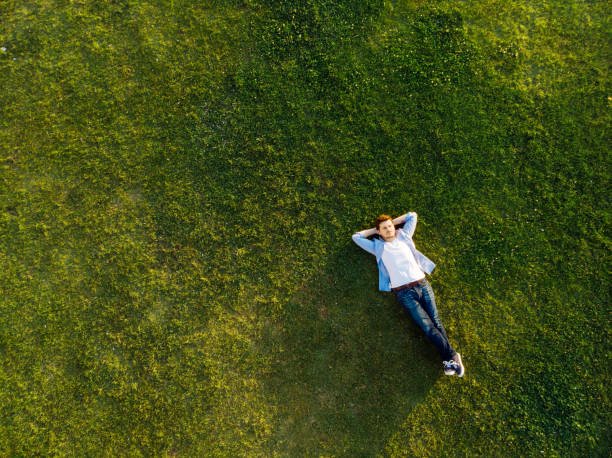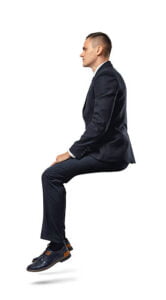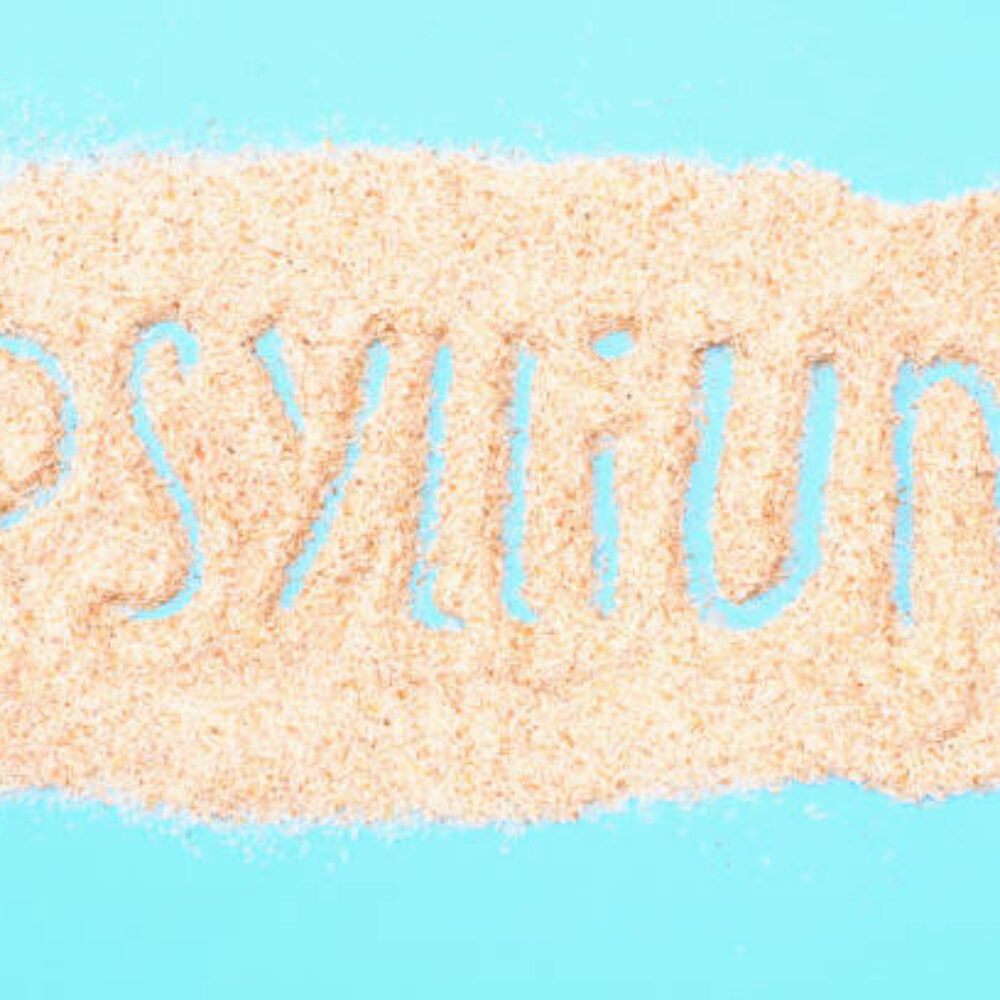Quick relaxation techniques for anxiety can help reduce your stress when it is high.
When you experience a lot of tension or anxiety, what happens in your body? When you are terrified, what changes occur in your body and mind? Think about it.
During these times, your chest may pound, it may feel like someone is pressing on your head, sometimes your hands or legs tremble, and you feel uneasy. At that time, your throat and mouth become dry, and you may need to go to the toilet frequently.
These symptoms are caused by tension. The reason for these symptoms is that our brain has an area called the amygdala. When this area is too active, it increases stress, and these symptoms occur.

Now think about doing your favorite activity, like playing something or watching something on YouTube, very comfortably. At this time, your tension is supposed to decrease because you feel so relaxed. Your heart rate is regular, your breathing is also standard, and the muscles in your hands and feet are comfortable.
But when you are tense, the muscles in your hands and feet tighten. When you are too relaxed, an area in the front part of your brain called the frontal lobes is active.
In simple terms, you can think of the area in your brain where tension originates as a red light area, and the area where you feel relaxed as a green light area. If the green light shines more, you feel clam and comfortable, and if the red light shines more, you feel anxiety and depression.
If you cannot control your tension and anxiety, today we will share quick relaxation techniques for anxiety that can help you maintain it.
The method we will share today is also called relaxation therapy. Through this method, you can gain more power to relax your body.
Quick relaxation techniques for anxiety
This relaxation therapy has three steps:
- Progressive Muscular Relaxation Therapy (P.M.R.T.)
- Breathing Exercise
- Imagery Exercise
Progressive Muscular Relaxation Therapy (P.M.R.T.):
Progressive Muscular Relaxation Therapy involves muscle exercises, which are very good for relieving tension.
How to do Progressive Muscular Relaxation Therapy:
In this exercise, the first priority is to start with the bottom part of your body, then the upper part, and lastly your whole body. Look at the picture below:

First, do muscle exercises for the bottom part of your body. To do this, sit in a chair like the picture shows, and then press your feet against the floor, tightening the bottom part of your body.
Do this for a minute, and then slowly relax the bottom part of your body. Feel the complete relaxation. Below the waist is the bottom part of your body. You should feel the complete relaxation for 1 minute. This was the exercise for the lower part of your body.
Next, do exercises for your upper body. In this exercise, sit like the picture shows, and then keep your knees tight with both hands, and you will feel your hands tighten.
When you are very tense, your muscles will tighten and feel uncomfortable, but you will understand this. Tighten your knees for 10 seconds and understand that when you are tense, your body will feel like this. After that, slowly relax your hands—don’t do it too fast—feel the relaxation, and notice how you can relax your body from being tight, just as you can relax your body from tension.
Now, tighten your entire body, then release and relax the whole body. To do this, follow both processes where we relax the upper part and bottom part of the body. Do this same process at the same time.
Do this exercise for the bottom body 3 times, for the upper body 3 times, and for both the upper and bottom body exercises 3 times. This is the process of Progressive Muscular Relaxation Therapy.
Breathing Exercise is also a quick relaxation techniques for anxiety:

When we are very tense, we breathe quickly, take shallow breaths, and breathe frequently. Do you know what happens if you breathe like this? The concentration of carbon dioxide in the brain becomes random. When this happens, you feel more tension and may experience physical problems like those mentioned earlier.
When you feel very tense, do breathing exercises. Even in your daily life, you should do this exercise to have a better life. Breathing exercises are especially beneficial for panic attacks.
How to do Breathing Exercises:
How can you take an ideal breath? Should the breath fill the chest? Is it right to breathe with a full chest or a full belly? You will be surprised to know that the ideal breath fills the belly more than the chest.
To do an ideal breathing exercise, first, sit and relax. Now, slowly close your eyes and focus on your breathing. In this process, we breathe with the belly.
First, take a breath for 4 seconds, then hold it for 4 seconds, and release the breath for 5-6 seconds. Breathe through your nose and exhale through your mouth. Do it slowly and notice that the chest does not swell; the stomach swells. Focus on your breath and feel yourself taking in oxygen and releasing carbon dioxide. After some time, you will feel very relaxed. You can do this at any time.
Imagery Exercise for anxiety:
In this exercise, you will take your mind to a specific place. Let me tell you some scenarios. You have to imagine yourself in that place. Deep visualization and deep concentration will take you there.
Sit very comfortably, slowly focus on your breath, take a deep breath, hold it, and release it slowly. Now close your eyes and imagine yourself walking through a green field. You are moving slowly, barefoot on the dewy grass.
Deeply imagine three gas balloons—red, blue, and green—in your hand. Slowly release the red balloon towards the blue sky while walking. As the red balloon disappears into the sky, all the sorrows in your mind also disappear. Imagine, “I am at peace.” You move a little further ahead, under a beautiful sky.
Now, slowly release the blue balloon into the sky. Feel all your stress fly away with this balloon. Two balloons are gone, stress is gone, and sadness is gone. Imagine yourself feeling light, confident, and calm.
Release the last balloon. All your frustration is gone with this balloon. Your sadness, depression, and frustration are all gone with these three balloons. Now imagine yourself walking peacefully, without any tension, and feel at peace.
This time, you walk across the field and sit by a pond. The gentle wind is touching your body. The water of the pond is clear and wavy, and a leaf is floating from side to side. All your tension, sorrows, and frustration are also floating away with this leaf. Feel, “I am at peace, I am at peace.” Now focus again on your breathing, and slowly open your eyes and sit normally.
If you do these three steps correctly, you will feel much better. If you can do this exercise twice daily, you can relax your body. plz Do not do it when it’s too cold or too hot. Don’t do it on an empty stomach or a full stomach. If you don’t see any improvement after doing this, consult an expert.
Let us know how you are feeling after doing these quick relaxation techniques for anxiety. if you don’t understand these steps properly, Subscribe to our newsletter for a video guide to these techniques!
Researches For Relaxation Techniques
Amygdala and Stress Response:
The amygdala, a key brain region involved in stress and anxiety, plays a significant role in the body’s fight-or-flight response. When overactivated, it leads to heightened anxiety and physical symptoms such as increased heart rate and muscle tension. Relaxation techniques can help modulate amygdala activity, promoting calmness. Studies have shown that progressive muscle relaxation and breathing exercises can reduce amygdala hyperactivity and relive stress symptoms.
Breathing Exercises and Anxiety Reduction:
Controlled breathing, particularly diaphragmatic (belly) breathing, has been found to regulate the autonomic nervous system. This helps decrease physiological markers of stress like rapid heart rate and shallow breathing. Research indicates that breathing exercises not only reduce acute anxiety but also improve overall emotional resilience over time.
NCBI
Visualization and Imagery exercises :
Techniques like imagining peaceful scenes can activate the brain’s parasympathetic nervous system. Studies highlight that guided imagery reduces cortisol levels (a stress hormone) and improves feelings of relaxation, making it a powerful tool for managing anxiety.
NCBI




Pingback: Foods That Help Ease Constipation - theguthealthstuff.com
Pingback: The Power of Spirulina: Boost Gut Health and Immunity with This Superfood - theguthealthstuff.com
Pingback: Easy Ways to Eat Healthy - theguthealthstuff.com
Pingback: Benefits of Quinoa | High Fiber, Complete Protein, and Gluten-Free
Pingback: Juice Recipes for Gut Health | Improve Digestion Naturally
Pingback: Irritable Bowel Syndrome[I.B.S.] - theguthealthstuff.com
Pingback: Why Is Mindful Eating Important to Lead a Healthy Lifestyle? - theguthealthstuff.com
Pingback: Signs of Disturbed Digestion - theguthealthstuff.com
Pingback: Gut Health and Its Impact on Anxiety - theguthealthstuff.com
Pingback: Optimizing Mental Health Through Diet - theguthealthstuff.com
Pingback: Sleep - theguthealthstuff.com
Pingback: Serotonin - theguthealthstuff.com